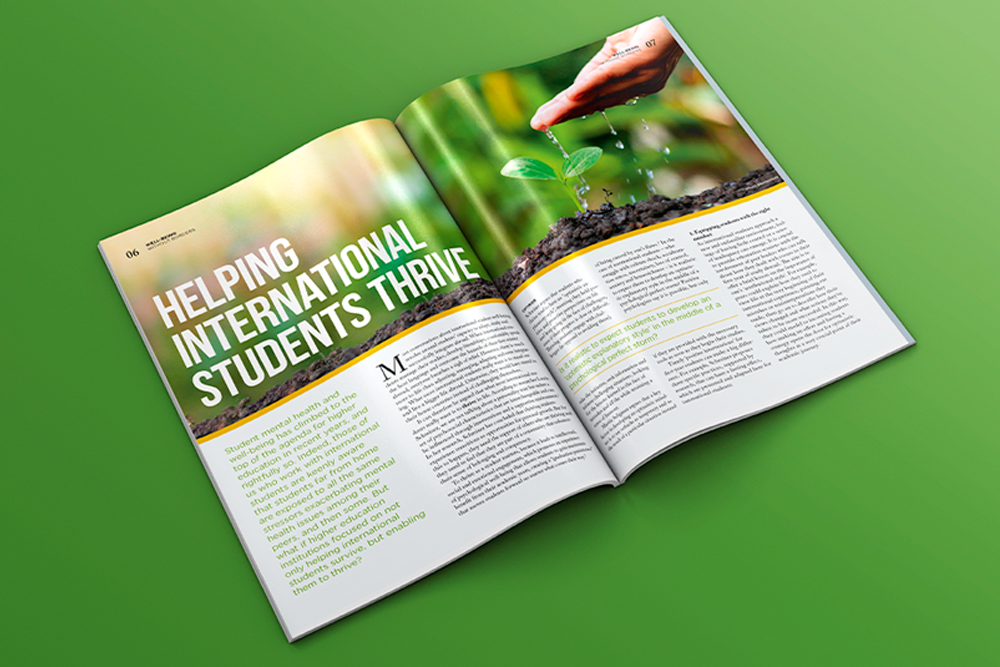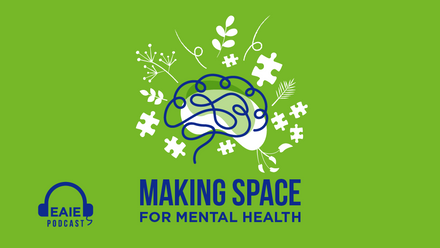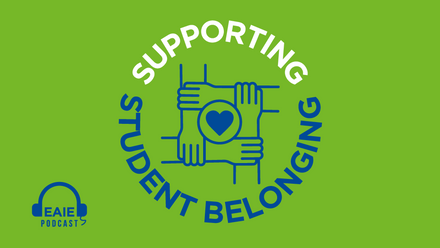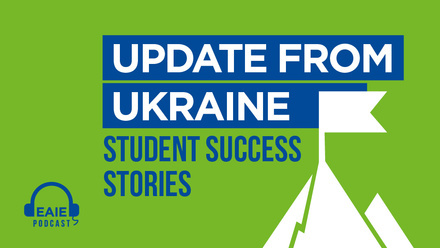Helping international students thrive

Student mental health and well-being has climbed to the top of the agenda for higher education in recent years, and rightfully so. Indeed, those of us who work with international students are keenly aware that students far from home are exposed to all the same stressors exacerbating mental health issues among their peers, and then some. But what if higher education institutions focused on not only helping international students survive, but enabling them to thrive?
Most conversations about international student well-being revolve around students’ capacity to adapt, study and successfully integrate abroad. When international students manage their studies, develop friendships, comfortably speak the host language and overcome the hazards of their first winter abroad, everyone breathes a sigh of relief. However, there is much more to life than adjusting, managing, adapting and even integrating. What most international students really want is to stand out and live a bigger life abroad. Otherwise, they would have stayed in their home countries instead of challenging themselves.
It can therefore be argued that what most international students really want is to thrive in life. According to researcher Laurie Schreiner, we are not talking about a personality trait but rather a set of psychosocial characteristics that are interchangeable and can be influenced through interventions and a supportive environment. In her research, Schreiner has concluded that thriving students experience transitions as opportunities for personal growth. But for this to happen, they need the support of others who are thriving and they need to feel that they are part of a community that enhances their sense of belonging and competency.
What most international students really want is to thrive in life
To thrive as a student matters, because it leads to intellectual, social and emotional engagement, which promotes an experience of psychological well-being that allows students to gain maximum benefit from their academic years, creating a "graduation persistence" that moves students forward no matter what comes their way.
Optimism
Schreiner argues that students who thrive tend to have an "optimistic explanatory style", meaning they hold positive and proactive perspectives on life and keep going in the face of challenges, even if their progress is slow or difficult. Thriving students engage with challenges (as opposed to avoiding them), take the initiative, seek information and reframe challenging situations, looking for the lessons learned in the face of mistakes and all the while retaining a sense of humour.
Martin Seligman argues that a key factor in developing an optimistic mindset is to see setbacks as temporary and as the result of a particular situation instead of being caused by one’s flaws. In the case of international students – who struggle with culture shock, acculturation stress, uncertainty, loss of control, anxiety and homesickness – is it realistic to expect them to develop an optimistic explanatory style in the middle of a psychological perfect storm? Positive psychologists say it is possible, but only if they are provided with the necessary tools as soon as they begin their studies.
Timely ‘positive interventions’ for first-year students can make a big difference. For example, Schreiner proposes three specific practices, supported by research, that can have a lasting effect, which are presented and adapted here for international students:
1. Equipping students with the right mindset
As international students approach a new and unfamiliar environment, feelings of having little control or a sense of inadequacy can emerge. It is crucial to provide orientation sessions with the involvement of peer leaders who can talk about how they dealt with events in their first year of study abroad. The aim is to offer a brief lesson on the importance of one’s ‘attributional style’. For example, peers could explain how they used to view life at the very beginning of their international experience, pointing out mistakes or misinterpretations they made, then go on to describe how their views changed and what actions they’ve taken to be more successful. In this way, they could model to incoming students how making an effort and having a strategy opens the door for optimistic thoughts at a very crucial point of their academic journey.
2. Helping students envision success
Schreiner points to interventions designed by psychologists Hazel Markus and Paula Nurius around the concept of the "possible self", or an individual’s idea of what they might become in the future and would like to become. From there, the concept of visualising the "best possible self" was introduced. Research has demonstrated that this can lead to positive emotions and support actions aimed at reaching one’s goals. Helping students reflect upon their best possible selves at the start of their studies is a positive intervention that universities can make.
Researchers Layous, Nelson and Lyubomirsky asked university students to engage in writing about their best possible selves in the following way: "Now, write down a goal (or goals) you think you might want to attain that will help you achieve your best possible self that you just described. Sometimes long-term goals seem overwhelming or out of your reach. But every journey begins with just a single step. Think about taking baby steps towards your long-term goal (or goals). A baby step could be as simple as proactively seeking information you need or talking to someone who may be able to guide you. Defining the next baby step you need to take to get a little closer towards your goal is a great way to get going with the journey without worrying too much about the length of the road."
Their study found that proactively thinking about best possible selves significantly boosted students’ positivity, flow and feelings of connection, both online and in person.
3. Helping students apply personal strengths
Schreiner argues that one of the major contributions of positive psychology to higher education is the emphasis on building on one’s strengths to address life challenges. Unfortunately, support for international students tends to focus on what they lack or need rather than on what they bring to the table. However, when students’ talents are identified early, it communicates that they have something to contribute to their learning environment that is also valuable to others, serving as a confirmation of their ability to succeed.
In this sense, another well-known positive psychologist, Barbara Fredrickson, points out that "people who have every day the opportunity to do what they do best – to act on their strengths – are far more likely to flourish". So what can raise awareness among international students about their capabilities? For starters, we can invite them to think about their strengths in a deeper way, providing self-exploration tools such as the VIA Survey of Character Strengths. This is a free self-assessment tool that offers personalised reports listing participants’ best personal qualities.
Thriving hubs
To conclude, support for international students’ needs must go beyond helping with adaptation. We must provide tools for students to thrive and think big if we want to see them live their best lives abroad.
Is it realistic to expect students to develop an optimistic explanatory style in the middle of a psychological perfect storm?
Creating an environment where international students thrive is an intentional practice, informed by research and institutional commitment. Maybe it’s time for universities to become ‘thriving’ hubs that support resilient happiness, instead of priming international and exchange students with modest expectations.






